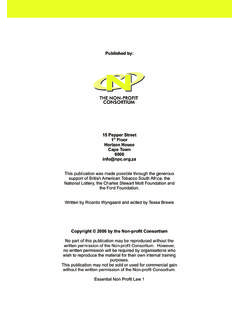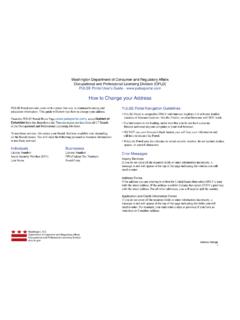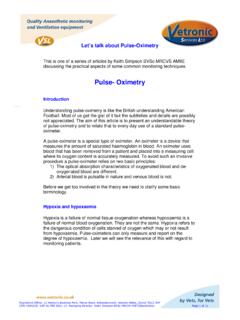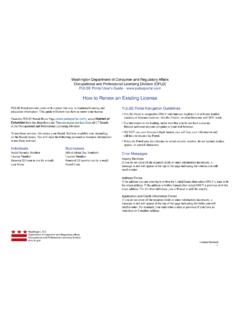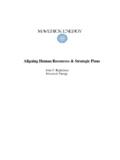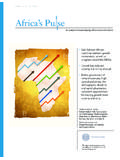Transcription of Checking the Organizational Pulse - iMetacomm
1 1 Checking the Organizational Pulse Phillip G. Clampitt, Laurey R. Berk, & Tom Cashman The ability to routinely, simply and reliably tap into the ever-changing working climate presents an enduring challenge to Organizational leaders. Those who have this skill can more readily institute needed changes, respond to emerging threats and improve employee satisfaction. Executives use a variety of methods, such as anecdotal information, yearly climate surveys and focus groups, to understand the day-to-day Pulse of their organizations.
2 Unfortunately, these traditional methods can be problematic for a number of reasons. Some executives rely on anecdotal information they gather from the grapevine. The expedience of the method often over-shadows the problems with reliability: the picture painted may vary greatly from the reality. For example, the most recent rumor may reflect only one person s opinion. Additionally, anecdotes that vary too far from the conventional wisdom rarely reach the ears of executives. Like most people, executives seek out information that confirms, rather than disconfirms, their existing view of the world.
3 Even if relevant stories do catch an executive s attention, it may be too late to act in a meaningful way. Other executives rely on yearly or bi-yearly climate surveys. It is not unusual for these surveys to contain more than 100 questions covering a wide range of issues. Many executives prefer this seemingly comprehensive approach and the ability to isolate particular units or departments that have unique concerns. We have conducted scores of these surveys and have experienced a consistent problem: by the time senior executives have identified concerns, prioritized them, and created action plans, the problems or concerns have often shifted to something else.
4 As a result, employees may express their concerns and discontent in other, more timely ways, often with deleterious effects. Consider, for example, Internet websites or gripe boards employees create to air grievances about their company ( , ). In short, yearly surveys often fail to capture the ever-changing and dynamic Organizational atmosphere. On occasion, executives may sponsor focus group-driven assessments, which are designed to provide a rich understanding of employee concerns. And they often do, but they also take time to conduct and thoroughly analyze.
5 Additionally, employee participants may exert subtle pressure on others to confirm the prevailing wisdom, resulting in a concern with data validity. We are not indicting any of these methods; in fact we use many of them. But our concerns about the traditional methodologies led us to develop another alternative. We call it the Pulse Process. The Pulse Process The Pulse Process has three major objectives: 1) Identify employee concerns and reactions to on-going initiatives in a timely, reliable, and economical manner; 2) Respond 2 to these concerns, and 3) Cultivate a productive dialogue between executives and employees.
6 At the heart of this process are three items: ? A short Pulse Survey that is routinely administered to a rotating sample of employees. The survey items include both traditional numerically-rated, closed questions as well as one or two open questions. ? The Pulse Report, which is a 1-page summary of the findings, presenting quantitative data for the numerically-rated questions and major themes for the open questions. ? An Executive Response, outlining senior management reactions to the issues highlighted from the current Pulse Report.
7 In some cases, executives choose to respond to each question raised in the report The Pulse Report provides the organization with a timely, accurate record of the current working climate. The executive response cultivates a productive and on-going dialogue within the organization. Constructing the Survey The Pulse Process begins with designing the survey parameters. Employees should be able to quickly and easily complete the survey. They are less likely to see the survey as burdensome when it contains a limited number of questions.
8 We typically limit the survey to a maximum of twelve numerically-rated questions and two open questions. The bottom line: most Pulse Surveys can be completed in less than 3 minutes. We use a question protocol that divides the content of the survey questions into three sections (see Illustration 1). ? In the first section, we ask broad base-line closed questions on an agree/disagree scale about the climate ( , Our organization is headed in the right direction ). We hold these questions fairly constant over time.
9 By doing so, we can monitor long-term changes in the climate and avoid the influence of more specific items addressed later in the survey. ? In the second section, we focus on employee reactions to more recent Organizational issues, rotating through a new set of questions every six months or year. We try to strike the right balance between questions focusing on feedback ( , Our training efforts are having a positive impact on the business ) understanding, ( , I have a good sense of the company s priorities ) and behavior ( , My supervisor provides routine updates ).
10 Generally, the behaviorally-based questions prove to be the most revealing (Morrel-Samuels, 2002). ? In the final section, we ask one or two open questions that allow employees to comment on virtually anything happening in the organization that may be of concern to them ( , If you could ask senior executives one question, what would it be? ). 3 Administering the Survey Establishing the appropriate protocol on the survey administration requires equal care. If employees are surveyed too often, they may suffer from survey fatigue.


